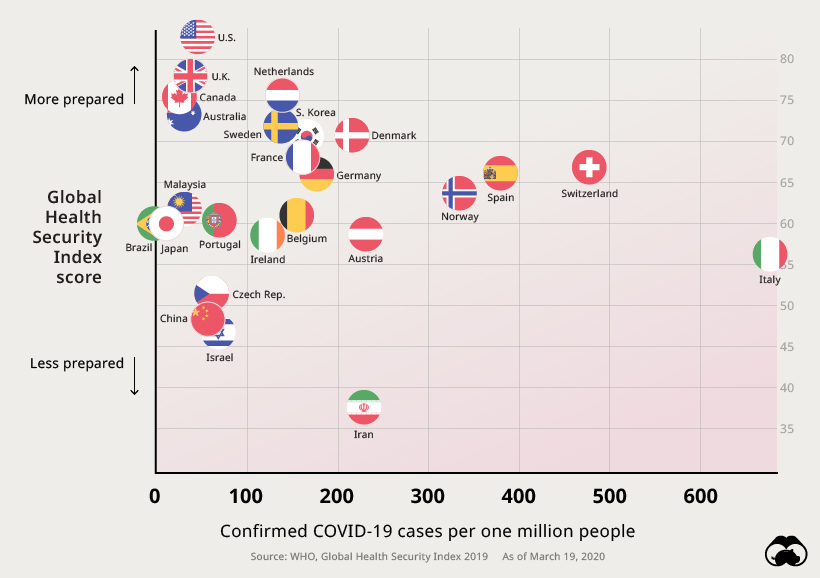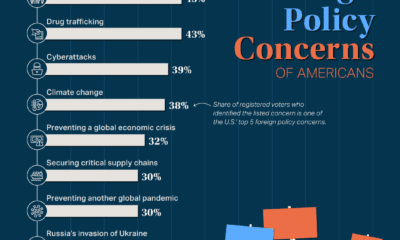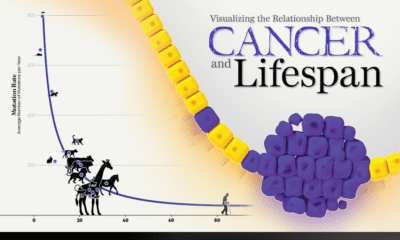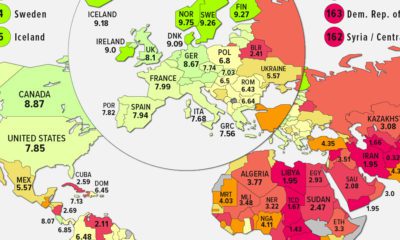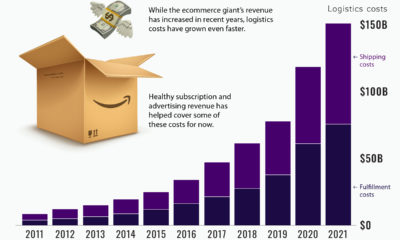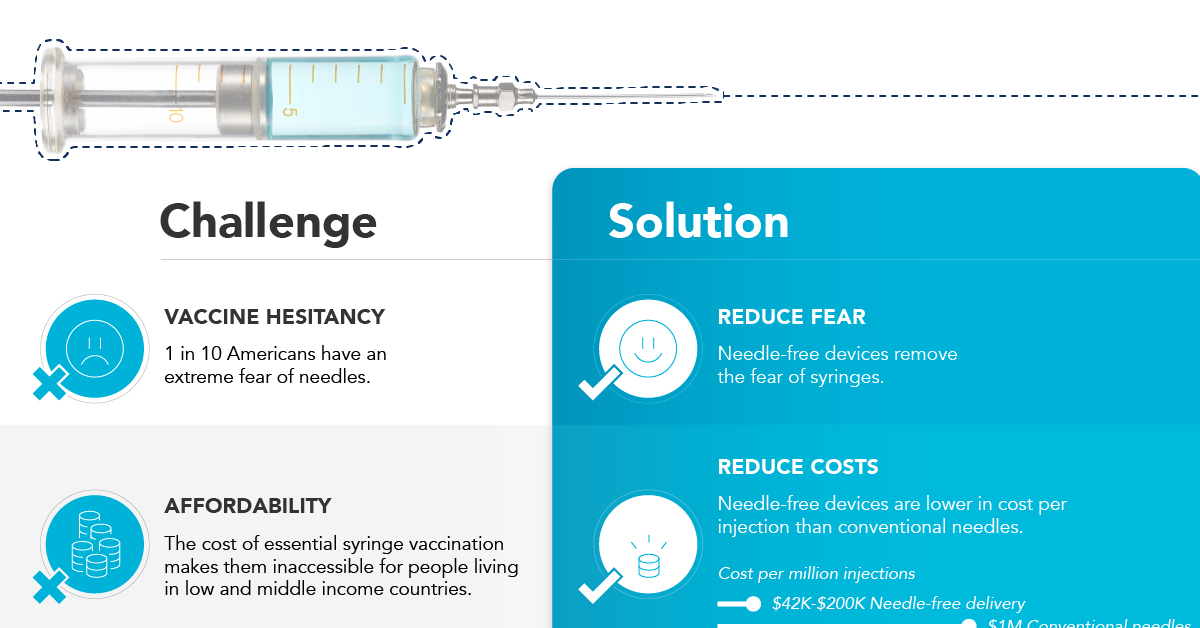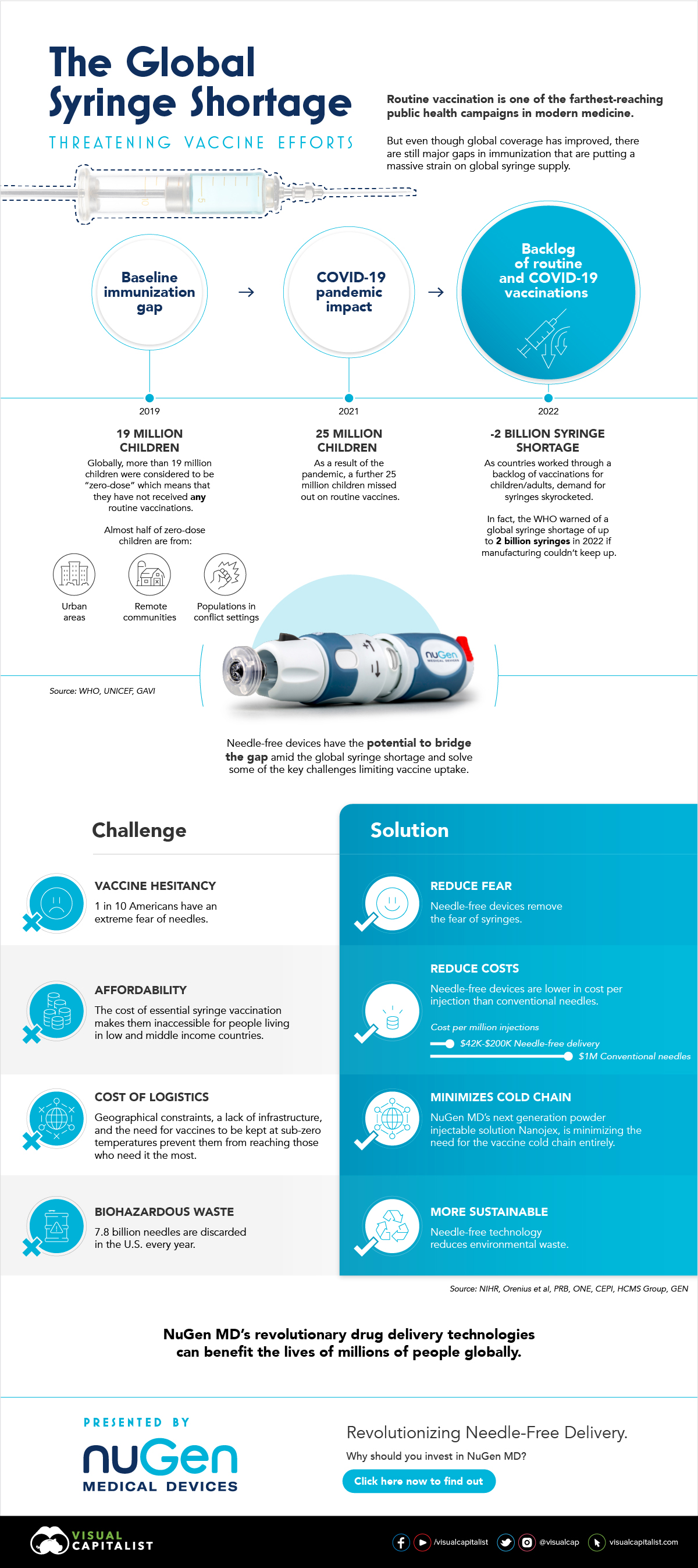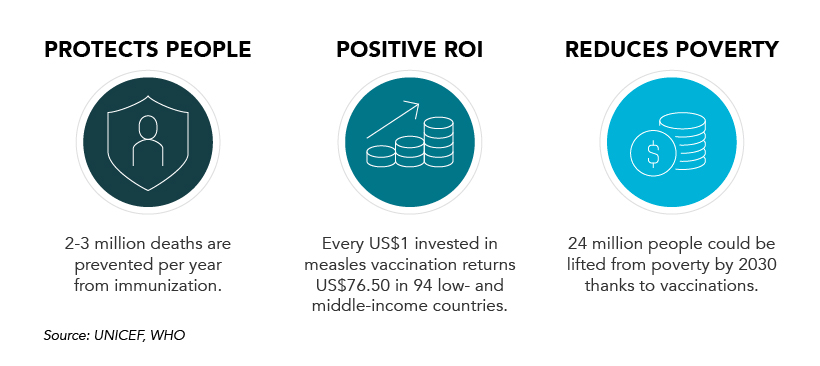However, even with the readily available medical expertise and equipment that exists today, it is still unevenly distributed throughout the globe. Combine this with a highly interconnected global economy, and large populations are still at risk from infection. Today’s chart pulls data from the 2019 Global Health Security Index, which ranks 195 countries on health security. It reveals that while there were top performers, healthcare systems around the world on average are fundamentally weak—and not prepared for new disease outbreaks.
Pathways for Commerce and Disease
Modern transportation and trade have linked the farthest stretches of the world to fuel a global economy. Physical distance plays less a limiting role and more an enabling one to form a flat world as Thomas Friedman put it, creating opportunities for commerce anywhere in the world.
A person can sell dishware from his home in Cusco, Peru, online to a customer in Muncie, Indiana, with products manufactured in China, from materials sourced in Africa.
While these connections sound sterile, there are people interacting with one another to procure, manufacture, package, and distribute the goods. The connections are not just through products, but also people and animals across many borders.
Now, add up the interactions within the global food supply chain with plants and livestock and tourism industries and place them under the pressures of climate change, urbanization, international mass displacement, and migration—and the volume and variety of opportunities for disease transmission and mutation becomes infinite.
The same pathways of global commerce become the transmission vectors for disease. A cough in Dubai can become a fever in London with one flight and one day.
You Cannot Manage What You Do Not Measure
Despite this, we still live with national healthcare systems that look inward towards national populations, with less of a focus on integrating what is happening with the outside world. The Global Health Security (GHS) Index is the first comprehensive effort to assess and benchmark health security and related capabilities by nation, and it tracks six key factors to come up with an overall score for each of the 195 countries in the ranking: Note: The GHS Index is a project of the Nuclear Threat Initiative (NTI) and the Johns Hopkins Center for Health Security (JHU), and was developed with The Economist Intelligence Unit (EIU).
Country Overall Rankings
Overall, the rankings uncover a distressing insight. Global preparedness for both epidemics and pandemics is weak, with the average score in the index sitting at 40.2 out of 100. The countries with the highest scores have effective governance and politics systems in place, while those with the lowest scores fall down for their inadequate healthcare systems—even among high-income countries. Here are the 50 highest-ranking countries in the index: You can view the complete rankings of all 195 countries on the GHS Index website. Interestingly, 81% of countries score in the bottom tier for indicators related to biosecurity—and worse, 85% of countries show no evidence of having completed a biological threat-focused simulation exercise in conjunction with the World Health Organization (WHO) in the past year.
Confirmed COVID-19 Cases vs. Global Health Security Score
Many healthcare systems have had their security tested with the outbreak of COVID-19.
Although it is still extremely early, there appears to be a relationship between a nation’s health security and its ability to cope with pandemics.
Takeaways: A World Unprepared
While there may be top performers relative to other countries, the overall picture paints a grim picture that foreshadowed the current crisis we are living through.
The report outlined eight critical insights about global health security in 2019 that reveal some of the problems countries are now facing.
A Stark Reality
The intention of the Global Health Security Index is to encourage improvements in the planning and response to one of the world’s most omnipresent risks–infectious disease outbreaks. When this report was released in 2019, it revealed that even the highest ranking nations still had gaps to fill in preparing for a pandemic. Of course, hindsight is 20/20. The COVID-19 outbreak has served as a wake-up call to health organizations and governments around the world. Once all of the curves have been flattened, the next version of this report will undoubtedly be viewed with renewed interest. on In the above infographic from NuGen Medical Devices, we explore the factors leading to the syringe shortage and take a look at the company’s innovative needle-free solution that could play an important role in closing the immunization gap.
The Immunization Gap
Even before the COVID-19 pandemic, millions of people around the world struggled to get access to routine vaccinations. In fact, as of 2019 more than 19 million children around the world were considered to be “zero-dose” which means that they did not receive any routine vaccinations. Moreover, when the COVID-19 pandemic hit, global immunization dropped even further with 25 million children missing out on routine vaccines in 2021 alone.
Why is Immunization So Important?
Vaccinations prevent against over 20 life-threatening diseases and save between 2-3 million deaths per year, making them—as the WHO describes—the foundation of healthcare systems and an indisputable human right. As countries work through a backlog of vaccinations to close the immunization gap that has worsened since the pandemic, demand for syringes has significantly increased.
The Result: A Global Syringe Deficit
In 2022, the WHO warned that we could see a shortage of up to 2 billion syringes if manufacturing can’t keep up. This could result in the severe disruption to routine vaccinations and promote unsafe recycling of syringes in order to administer vaccines. But the issue goes far beyond a supply shortage of syringes. COVID-19 has brought conventional syringe vaccines into sharp focus, with many criticizing the challenges associated with them. With conventional needles facing so many challenges, it’s no surprise that investors are taking interest in viable alternatives. What’s more, these alternatives don’t just apply to vaccinations, they can also work for people with diabetes, dentists, and pet care.
Enter Needle-free Devices from NuGen MD
Needle-free devices have the potential to bridge the gap in immunization amid the global syringe shortage, solve some of the key challenges limiting vaccine uptake, and more importantly, benefit the lives of millions of people.
How Do They Work?
NuGen’s needle-free devices use a simple spring-loaded mechanism which uses pressure to release the liquid drug and penetrate the skin. In less than one-tenth of a second, the drug is dispensed more safely and evenly compared to needle syringes. It’s also virtually painless and leaves no mark on the skin.
Interested in investing in NuGen Medical Devices? To learn more about their plans to pioneer the future of needle-free drug delivery, click this link now.
